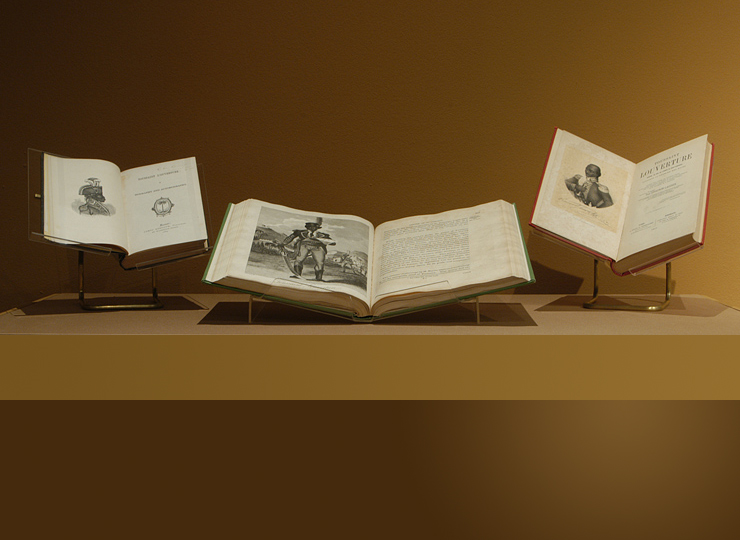
A wealth of images portraying Toussaint L’Ouverture were published in the nineteenth century. Toussaint invariably is shown in military dress, a reference to his part in the overthrow of colonial authority, but many subtle variations among the portraits indicate the degree to which the artist wanted to praise or demonize him.
The half-length portrait in Gragnon-Lacoste’s biography of Toussaint draws on traditional depictions of European leaders. It is an apt illustration for a book that describes L’Ouverture to be a brilliant politician who employed French ideals in order to serve his own purposes. Other images of Toussaint, in which he appears on horseback or brandishing a sword, project an aura of danger and strength. The story of the Haitian revolution was troubling for people on both sides of the slavery question. Even among some American abolitionists, Toussaint’s story foretold a frightening possibility—the violent revolt of black slaves against white society.All books lent by the Memorial Library, University of Wisconsin at Madison
Toussaint L’Ouverture: A Biography and Autobiography. Boston, 1863
Marcus Rainford, An Historical Account of the Black Empire of Hayti. London, 1805
Click on book to view detail
Thomas Prosper Gragnon-Lacoste, Toussaint L’Ouverture. Paris, 1877
